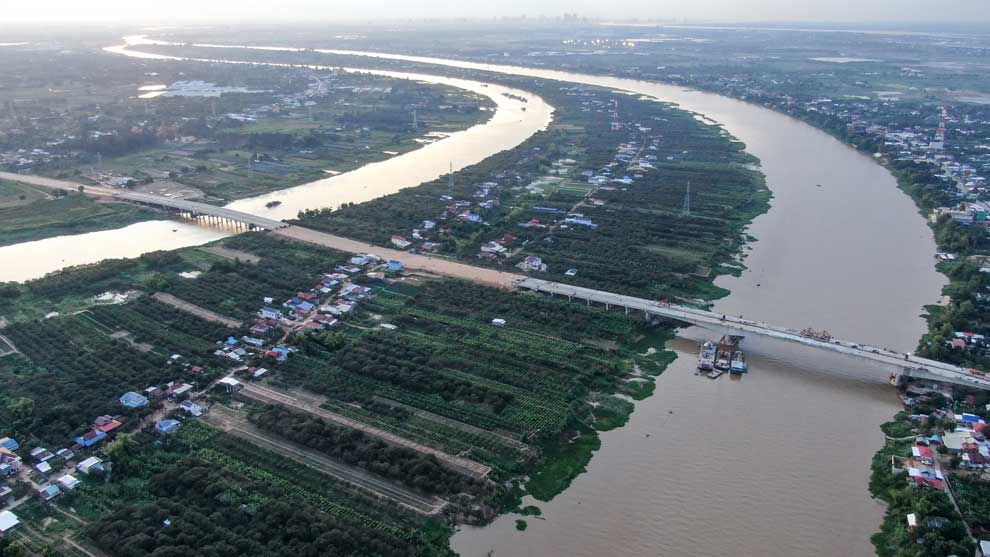
An aerial view of the Bassac River in Kandal province. YOUSOS APDOULRASHIM
Cambodia and China are looking into the logistics of creating a connection between the Bassac River and the sea in Kep province to provide a viable alternative for waterway passenger and freight traffic to enter the Kingdom without passing through Vietnam, according to the transport ministry.
The Bassac River is a distributary of the Tonle Sap Lake and Mekong River that starts in the capital and flows south to Kandal province’s Koh Thom district, crossing the border into Vietnam. The Kingdom largely relies on the Ka’am Samnor gate for international transport entering via waterways.
Minister of Public Works and Transport Sun Chanthol on April 22 met a delegation of the China Road and Bridge Corp, “representing CCCC Transportation Consultants Co Ltd”, via video link to discuss a recently-completed feasibility study on the Bassac River Navigation and Logistics System project, the ministry said in a statement later that day.
The minister said the project would upgrade Cambodia’s waterway network and ensure smooth traffic, benefit the national economy, and provide a more viable alternative to land transport.
“The navigation routes and logistics system on the Bassac River will bring positive changes to Cambodia’s waterway transport.
“Cambodia boasts a rich waterway network comprised of rivers such as the Mekong, Tonle Sap, Bassac, Sekong, Sesan and Srepok. However, Cambodia has yet to fully exploited the enormous potential of all those natural resources,” the statement quoted him as saying.
The statement did not provide a concrete timeframe for any works, projected cost estimates or length of the waterway connection.
Cambodia Logistics Association (CLA) president Sin Chanthy lauded the new project, saying it has the support of “many” transportation and logistics industry players.
He argued that the waterways offer the most efficient and effective mode of transport, and in particular provides more reasonable prices as well as safer and less-congested travel that uses less energy than overland options, namely railways and roads.
“In Cambodia, the use of waterways and railways is still limited, with the majority of transport encompassing road traffic with trucks abound. Waterway transport is the best, because Cambodia has the potential, with a large waterway network largely adjacent to agro-industrial and industrial zones,” Chanthy said.
According to the CLA president, more than 70 per cent of Cambodia’s imports and exports pass through Sihanoukville Autonomous Port, while land routes account for 20 per cent and air routes nearly 10 per cent.












